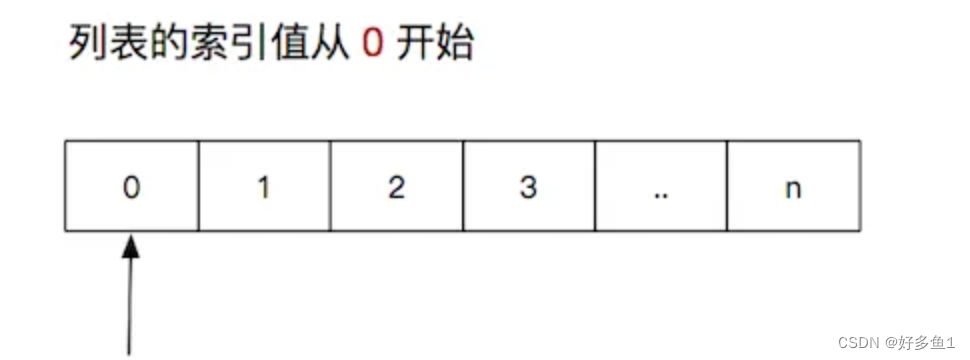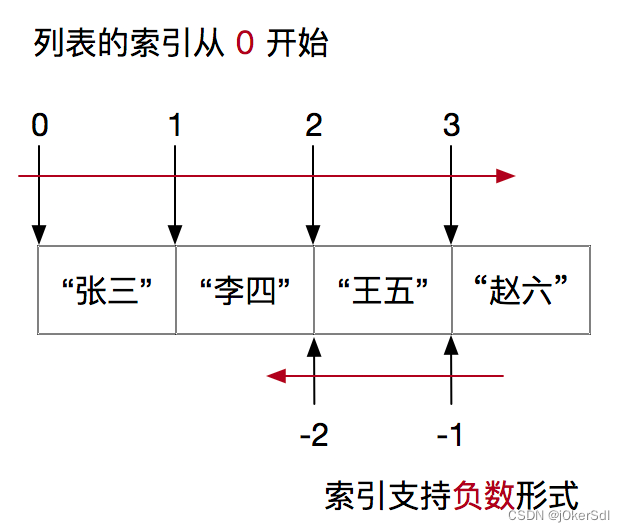一.创建列表
以逗号分隔的不同数据项使用方括号括起来,即可创建列表
**普通列表
>>> list1 = ['what', 'can', 'I', 'say']
>>> list2 = ["hong", "yun", "dang", "tou", "666"]
>>> number = [1, 2, 3, 4, 5]**混合列表
>>> mix = [1, 'woc', 3.234, [1, 3, 'kao']]**空列表
>>> empty = []二.向列表添加元素
1.使用函数:append()
>>> list1 = ['what', 'can', 'I', 'say']
>>> list1.append('oh man')
>>> list1
['what', 'can', 'I', 'say', 'oh man']若再次输入俩个元素,则出现以下错误
>>> list1 = ['what', 'can', 'I', 'say']
>>> list1.append('oh', 'man')
Traceback (most recent call last):
File "<pyshell#1>", line 1, in <module>
list1.append('oh', 'man')
TypeError: list.append() takes exactly one argument (2 given)2.使用函数:extend()
>>> list1 = ['what', 'can', 'I', 'say']
>>> list1.extend('oh', 'man')
Traceback (most recent call last):
File "<pyshell#1>", line 1, in <module>
list1.extend('oh', 'man')
TypeError: list.extend() takes exactly one argument (2 given)
仍然会出现错误,进行以下修改
>>> list1 = ['what', 'can', 'I', 'say']
>>> list1.extend(['oh', 'man'])
>>> list1
['what', 'can', 'I', 'say', 'oh', 'man'](以上都是将元素追加到列表的末尾)
3.使用函数:insert()
>>> list1 = ['what', 'can', 'I', 'say']
>>> list1.insert(0, 'oh man')
>>> list1
['oh man', 'what', 'can', 'I', 'say']
#特殊
>>> list1 = ['what', 'can', 'I', 'say']
>>> list1.insert(0, ['oh', 'man'])
>>> list1
[['oh', 'man'], 'what', 'can', 'I', 'say']三.列表中的元素操作
1.获取元素
通过元素的索引值(index)从列表获取单个元素(列表索引值是从0开始的)
>>> list1 = ['what', 'can', 'I', 'say']
>>> list1[0]
'what'2.交换列表中的元素
>>> list1 = ['what', 'can', 'I', 'say']
>>> temp = list1[0]
>>> list1[0] = list1[1]
>>> list1[1] = temp
>>> list1
['can', 'what', 'I', 'say']3.从列表中删除元素
函数remove()
>>> list1 = ['what', 'can', 'I', 'say']
>>> list1.remove('what')
>>> list1
['can', 'I', 'say']del语句
#1.可单独删除一个元素
>>> list1 = ['what', 'can', 'I', 'say']
>>> del list1[0]
>>> list1
['can', 'I', 'say']
#2.可删除一个列表
>>> list1 = ['what', 'can', 'I', 'say']
>>> del list1
>>> list1
Traceback (most recent call last):
File "<pyshell#9>", line 1, in <module>
list1
NameError: name 'list1' is not defined. Did you mean: 'list'?函数pop()
#1.无索引值
>>> list1 = ['what', 'can', 'I', 'say']
>>> list1.pop()
'say' #类似于栈,后进先出,返回删除的值
>>> list1
['what', 'can', 'I']
#2.有索引值
>>> list1 = ['what', 'can', 'I', 'say']
>>> name = list1.pop(2)
>>> name
'I'
>>> list1
['what', 'can', 'say']
4.列表分片(切片)slice
一次性获取多个元素
>>> list1 = ['what', 'can', 'I', 'say']
>>> list1[1:2]
['can']
>>> list1[1:3]
['can', 'I'] #左闭右开
>>> list1
['what', 'can', 'I', 'say'] #原列表无任何变化
四.列表的一些操作符
比较操作符
>>> list1 = [123]
>>> list2 = [234]
>>> list1 < list2
True
>>> list1 = [123, 456]
>>> lidt2 = [234, 345]
>>> list1 > lidt2
False逻辑操作符
>>> list3 = [678]
>>> (list1 < lidt2) and (lidt2 < list3)
True
>>> (list1 < lidt2) and (lidt2 == list3)
False
>>> list4 = list1 + list3 + lidt2
>>> list4
[123, 456, 678, 234, 345]
重复操作符
>>> list1 = ['what', 'can']
>>> list1 * 5
['what', 'can', 'what', 'can', 'what', 'can', 'what', 'can', 'what', 'can']
>>> list1
['what', 'can']
>>> list1 *= 3
>>> list1
['what', 'can', 'what', 'can', 'what', 'can']
成员关系操作符
>>> list1 = ['what', 'can', 'I', 'say']
>>> 'what'in list1
True
>>> 'oh man' not in list1
True
#特殊
>>> list1 = ['what', 'can', 'I', 'say', ['oh', 'man']]
>>> 'oh' in list1
False
# 只能访问一层
>>> list1 = ['what', 'can', 'I', 'say', ['oh', 'man']]
>>> 'oh' in list1[4]
True
>>> list1 = ['what', 'can', 'I', 'say', ['oh', 'man']]
>>> list1[4][1]
'man'
五.列表类型的内置函数
由此可得到列表的内置函数
>>> dir(list)
['__add__', '__class__', '__class_getitem__', '__contains__', '__delattr__', '__delitem__', '__dir__', '__doc__', '__eq__', '__format__', '__ge__', '__getattribute__', '__getitem__', '__getstate__', '__gt__', '__hash__', '__iadd__', '__imul__', '__init__', '__init_subclass__', '__iter__', '__le__', '__len__', '__lt__', '__mul__', '__ne__', '__new__', '__reduce__', '__reduce_ex__', '__repr__', '__reversed__', '__rmul__', '__setattr__', '__setitem__', '__sizeof__', '__str__', '__subclasshook__', 'append', 'clear', 'copy', 'count', 'extend', 'index', 'insert', 'pop', 'remove', 'reverse', 'sort']count函数:元素出现的次数
>>> list1 = ['what', 'can', 'what', 'can', 'what', 'can', 'what', 'can', 'what', 'can']
>>> list1.count('what')
5index函数:返回参数在列表中的位置
list1 = ['what', 'can']
list1.index('what')
0reverse函数:反转列表
>>> list1 = ['what', 'can', 'I', 'say']
>>> list1.reverse()
>>> list1
['say', 'I', 'can', 'what']
sort函数:排序
sort(reverse = True)
>>> list1 = [1, 3, 2, 8, 5, 6]
>>> list1.sort()
>>> list1
[1, 2, 3, 5, 6, 8]
>>> list1.sort(reverse = True)
>>> list1
[8, 6, 5, 3, 2, 1]






































